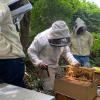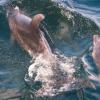Conservation of freshwater ecosystems in Suriname Research Paper
The conservation of freshwater ecosystems cannot be viewed separately from other components of nature conservation in Suriname. The Nature Preservation Law (Government Bulletin 1954, No. 26) provides the Government with the means to identify wildlands of special importance by designating them as Nature Reserves and, at the same time giving them full protection. Article 5 of this law states that it is forbidden to undertake any kind of activity in a nature reserve which will affect the integrity of the reserves in a detrimental way. It is also prohibited to camp, make fire, cut wood or make charcoal, and to hunt or fish, unless written permission for this has been obtained from the Head of the Suriname Forest Service, and then only on the conditions stipulated in the permit. On the basis of this law, thirteen nature reserves have already been established (Fig. 1; Table 1). Nine of these are in the freshwater region of the country, which is roughly located south of the road connecting Albina at the east border, with Nieuw-Nickerie at the west border (the so called Oost-West Verbinding), and which extends all the way to the south border with Brazil. It covers part of the Young Coastal Plain and the three other geomorphological regions, the Old Coastal Plain, the Savanna Belt, and the Interior, the latter being the hilly and mountainous region of the country. One nature reserve, the Galibi Nature Reserve, comprises both brackish-water and freshwater ecosystems.
Area of interest: Suriname
Year: 1993




